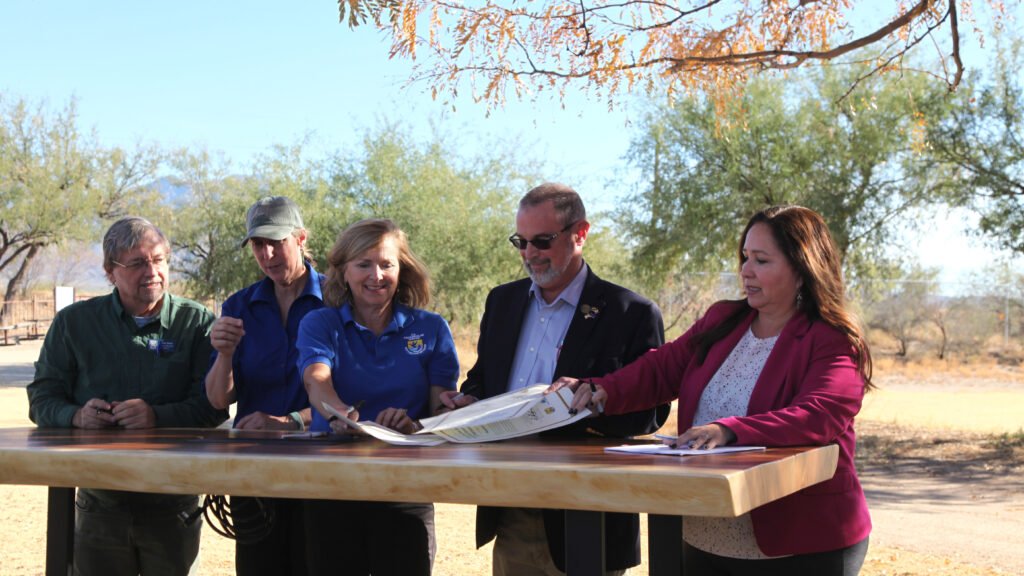Partnership for Santa Cruz River National Urban Wildlife Reserve
On Thursday, officials from local and federal agencies came together at Canoa Ranch in Green Valley to sign a memorandum of understanding (MOU) aimed at establishing a partnership for the Santa Cruz River National Urban Wildlife Reserve.
This collaboration marks the first of its kind in Arizona and may pave the way for the creation of the state’s inaugural urban national wildlife sanctuary.
The partnership includes representatives from Tucson, Pima County, Santa Cruz County, and the U.S. Fish and Wildlife Service (USFWS).
In addition to conservation goals, this alliance could open doors to future federal funding aimed at river restoration and safeguarding.
Adelita Grijalva, chair of the Pima County Board of Supervisors, mentioned that changes in presidential administration could complicate efforts to secure that federal support.
USFWS Director Martha Williams shared an optimistic outlook, emphasizing the agency’s dedication to community-focused conservation. She said, “It’s difficult to predict what the funding will look like since things can change, but I believe the Fish and Wildlife Department will remain part of the discussion.”
Williams, who was appointed by President Biden in October 2021, plans to resign as director in January.
Amanda McAdams, the local director of USFWS’s Southwest Regional Office, spoke about conservation as a long-term endeavor. “It’s something most Americans support. It reflects in their voting habits—issues like hunting, fishing, protecting endangered species, and caring for migratory birds. We’re eager to enhance the impact of those beliefs,” McAdams commented.
Williams also described the partnership as a model for future initiatives in conservation.
She stated, “The Fish and Wildlife Service has been aiming to create more urban reserves while fostering a community-driven approach to wildlife preservation.”
The proposed reserve seeks to protect natural resources along the Santa Cruz River, create permanent wildlife habitats, and improve public access to outdoor spaces.
Grijalva noted further partnership possibilities, including collaboration with the Pascua Yaqui and Tohono O’odham Tribal Nations.
“It not only safeguards the environment but also creates an invitation for the community to witness what’s possible when we come together,” Grijalva said.
Amy Lueders, USFWS’s Southwest Regional Director, referred to the partnership as a solid commitment.
“This is a crucial first step to ensure that collaborative efforts enhance everyone’s initiatives and that dedicated individuals remain involved throughout the process,” Lueders remarked.
In September, the USFWS released a blueprint for habitat and species conservation and approved two landscape conservation designs in conjunction with the Santa Cruz River Evacuation Coalition.
The agency also organized two community events for gathering input.
Moving forward, McAdams stated that the partnership will expand its range of stakeholders and plan for future engagement events.
“Our aim is to elevate the impact of conservation efforts and ensure authentic local voices are heard in what this looks like here,” McAdams concluded.







